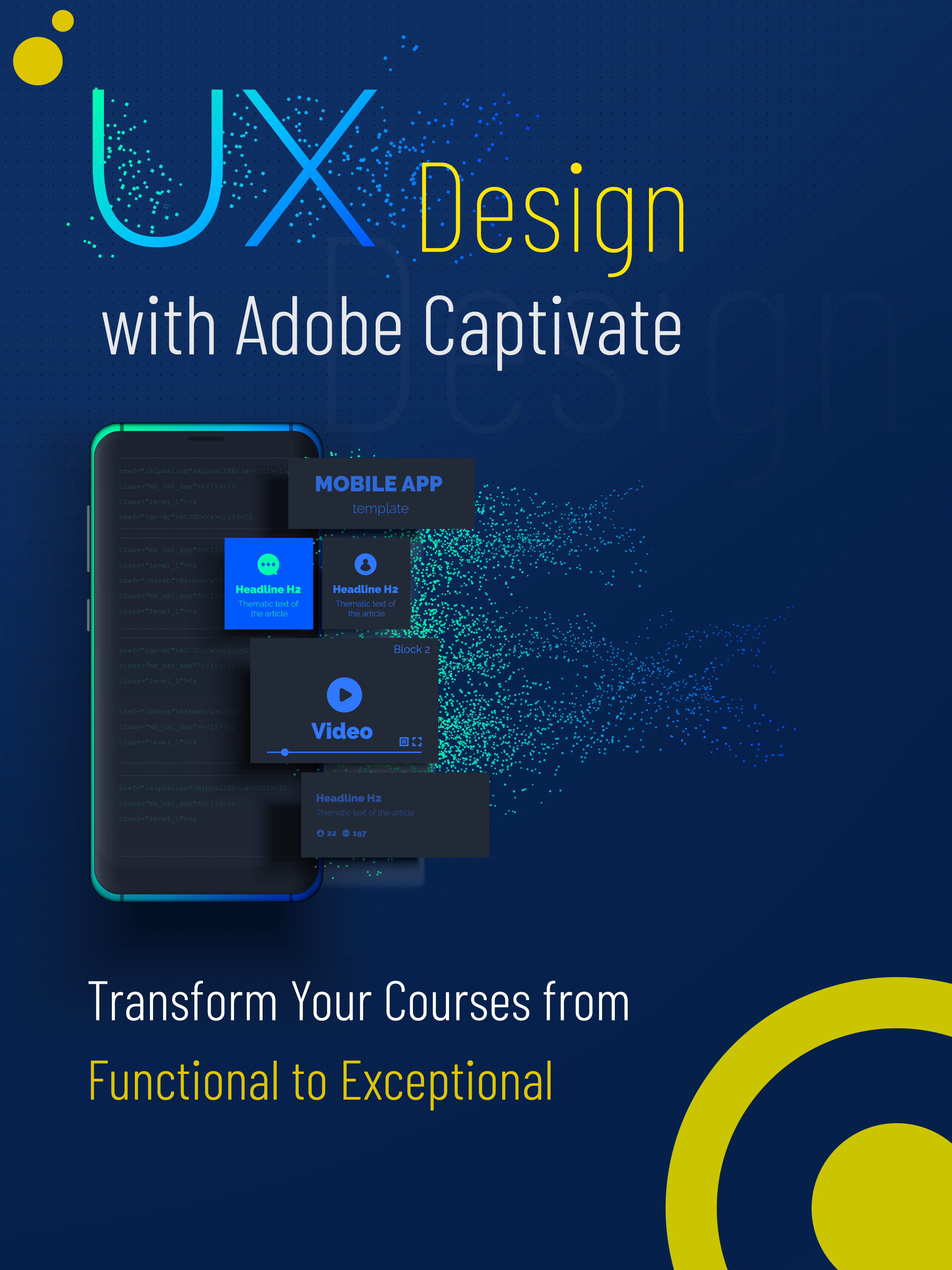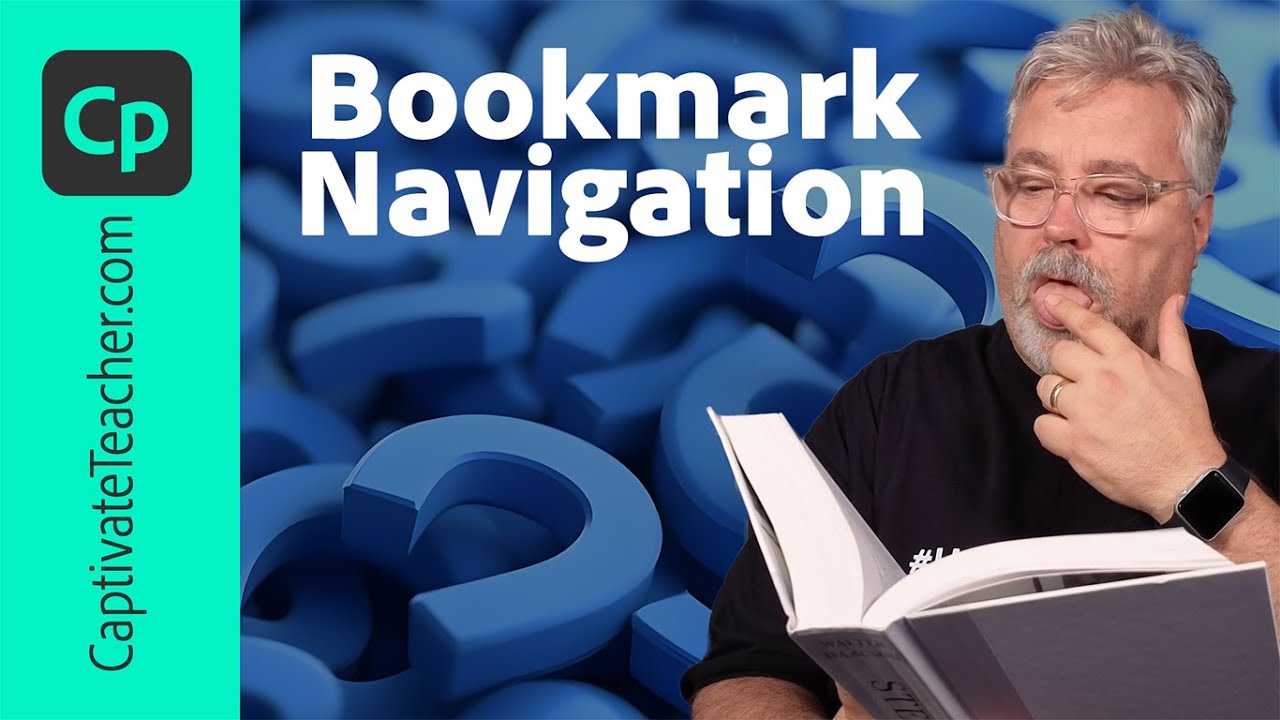#elearning
#elearning
[ follow ]
Online learning
fromeLearning Industry
5 days ago12 Corporate eLearning Guides To Help L&D Leaders Make The Nice List In Their Organizations
Adopt targeted, technology-enabled eLearning—combine LMS and LXP, measure learning ROI, and invest in interactive virtual training to boost learner engagement and business impact.
fromeLearning Industry
1 week agoInjecting The Ghost Into The Machine: Keeping Humanity In AI-Enhanced Learning Design
In eLearning's embrace of AI, like with our very own learners, there is the understanding that the human comes first. In Machine Learning, this is the human-in-the-loop (HITL), where humans help the machine make the correct decisions. In Instructional Design, this is the understanding that the designer imbues their humanity into their coursework to ensure a relatable, accurate, engaging learning experience, and not merely an efficient production.
Online learning
fromeLearning Industry
2 weeks agoHow Visual Communication Principles From Advertising Can Improve eLearning Design
In both learning and advertising, one challenge remains constant: capturing attention in a world full of distractions. While Instructional Designers focus on structuring knowledge, advertisers focus on visibility, clarity, and instant comprehension. Surprisingly, the same visual communication principles that make an ad effective can also make eLearning more intuitive, engaging, and memorable. Having worked closely with visual communication in high-traffic environments, I've seen how small design choices influence how people notice, process, and retain information.
Online learning
Online learning
fromeLearning
2 weeks agoTransforming Learning Experiences with Adobe Captivate: The Future of Interactive eLearning - eLearning
Adobe Captivate enables creation of responsive, interactive, and immersive multi-device eLearning with rapid authoring, LMS integration, and VR capabilities to improve engagement and training outcomes.
fromeLearning Industry
2 weeks agoThe Uses Of Artificial Intelligence In eLearning
Artificial Intelligence (AI) has become one of the most transformative technologies of the 21st century, influencing almost every aspect of modern life, and education is no exception. In recent years, AI has played a vital role in reshaping how we teach, learn, and interact within digital learning environments. The integration of Artificial Intelligence into eLearning systems has revolutionized the educational landscape, enabling smarter, more adaptive, and deeply personalized learning experiences for students around the world.
Artificial intelligence
Online learning
fromeLearning Industry
2 weeks ago15 eLearning Resources To Be Thankful For: Guides, Checklists, And Podcasts For L&D Pros
Curated eLearning resources help L&D professionals adopt interactive, AI-enabled, practical learning strategies and unified platforms to increase learner engagement and align training with business outcomes.
fromeLearning Industry
3 weeks agoHow To Confidently Evaluate And Choose Your eLearning Content Provider
Now that you understand your learners, their goals, the type of training needed, and what works best in your industry, it's time to choose your eLearning content provider. Selecting the right provider isn't just about finding the cheapest option or one with the most impressive website. It's about finding a partner who understands your vision and can help bring it to life. The provider you choose will influence your learners' experience and your training results. So, take a careful and thoughtful approach.
Online learning
Education
fromeLearning Industry
4 weeks agoThe Psychology Of Procrastination: Why We Put Off Learning Tasks And What We Can Do About It
Procrastination is an emotion-regulation problem where short-term mood repair overrides long-term learning goals, driven by anxiety, boredom, self-doubt, and avoidance.
fromeLearning Industry
4 weeks agoIndustry-Specific Training: Finding eLearning Content Providers Who Know You Well
When it comes to eLearning, not every platform or course style works for everyone. Every industry has its own requirements, pace, and priorities. For example, what motivates a hospital nurse to complete a course is very different from what inspires a retail manager. That's why a generic approach rarely works in eLearning. And that's where a knowledgeable eLearning content provider, one that knows your industry, becomes important.
Online learning
fromeLearning Industry
1 month agoWhat Are The Best Business Lead Generation Ideas For eLearning And HR Tech Vendors?
In fact, 68% of B2B marketers say that consistent lead generation is tough. That's why you need to enforce the best business lead generation ideas and abandon old, outdated methods that are no longer providing you with decent results. For instance, cold outreach used to be the norm a few years ago. However, we are seeing a massive shift where marketers follow a more strategic approach instead of the usual spammy calls and emails.
Marketing tech
Online learning
fromeLearning Industry
1 month agoOctober 2025 eBook Launches: Exploring Headset-Free VR, Scaling Engagement, And Training Alignment
Embrace immersive, aligned, and measurable training solutions and use checklists and frameworks to choose LMSs, improve engagement, and drive business impact.
fromeLearning Industry
1 month agoiSpring Suite Max Officially Renamed iSpring Suite AI
iSpring Suite is an all-in-one authoring tool that lets users design pro-looking eLearning content-interactive courses, quizzes, video tutorials, role-plays, SCORM-compliant eBooks, and interactions-with no tech skills or IT background. "With strong AI capabilities, iSpring Suite moves beyond a traditional authoring tool to become a strategic partner in course creation," said Michael Keller, Chief Product Officer at iSpring Solutions. "By automating routine tasks, AI allows L&D professionals to focus on what really matters: creativity and innovation in designing truly engaging learning experiences."
Education
Online learning
fromeLearning Industry
1 month agoChoosing The Right Learning Strategy: A Practical Guide For L&D Leaders In Highly Regulated Industries [eBook Launch]
Choose L&D strategies tailored to learner profiles, delivery context, and regulatory requirements to deliver scalable, engaging, measurable, and audit-ready training aligned to business goals.
fromeLearning
1 month agoThe Rising Influence of Artificial Intelligence (AI) and Machine Learning (ML) in eLearning - eLearning
Artificial Intelligence (AI) is basically teaching computers to think and make decisions like humans do. Imagine having a super-smart assistant who never gets tired, never forgets anything you've told them, and can process massive amounts of information in seconds. That's AI in a nutshell. In the world of online learning, these technologies work together to create something we've never had before: educational experiences that actually adapt to each person's unique needs and learning style.
Online learning
fromeLearning Industry
1 month agoThe Power Of Voice: Elevating eLearning Through Voice-Over
Voice-over adds a human dimension to digital learning. It guides learners through content, clarifies complex ideas, and creates a sense of presence that static text and visuals alone cannot achieve. In asynchronous environments-where learners navigate content independently-it serves as a virtual instructor, offering structure, tone, and emphasis that help learners stay focused and emotionally connected. Enhancing Engagement And Attention One of the most powerful benefits of voice-over is its ability to anchor learner attention.
Online learning
fromeLearning Industry
1 month agoeLearning Development: A Strategic Guide For Corporate L&D Professionals
The corporate world of today is so dynamic and it changes so very quickly that continuous learning has become a must. Companies are using eLearning more and more to train their employees with the skills necessary to face the digital transformation. In this way, they not only raise the productivity of the company, but also stay ahead of the competition. The workforce's eLearning adoption is a significant part of the overall Learning and Development (L&D) landscape, and thus, L&D professionals need to be knowledgeable about the various facets of eLearning design to facilitate the desired organizational change through their training interventions. This complete guide explores the eLearning process, including its importance to businesses and ways to achieve successful learning experiences.
Online learning
fromeLearning Industry
2 months agoHow To Leverage Your eLearning Courses In A Certification Program
Designing the right content for eLearning courses is essential to the success of any certification program. Planning the right topics for your eLearning content that covers the domains and competencies to be tested and validated ensures that learners don't just pass an assessment, but truly develop the skills and knowledge the certification is meant to validate. When courses are engaging, well-structured, and aligned with measurable outcomes, they prepare learners to demonstrate real-world competence with confidence.
Online learning
fromeLearning Industry
2 months agoBest Project Management In eLearning Development 2026
If you've ever been involved in eLearning development, you know that great ideas are only half the battle; the other half is project management. The truth is, even the most creative Instructional Design can fall apart without the right structure, tools, and communication in place. That's why every year we take a closer look at the companies that aren't just building courses, but mastering the art of keeping projects on track, teams aligned, and clients happy.
Online learning
fromeLearning Industry
2 months agoHow eLearning Is Shaping The Future Of Finance Education
Finance has always been a cornerstone of personal and professional success. Whether it's budgeting for a household, managing investments, or understanding corporate financial statements, financial literacy empowers better decision-making. However, traditional finance education often struggled with accessibility, engagement, and practical application. This is where eLearning is reshaping the landscape, offering new opportunities to learn anytime, anywhere, and at one's own pace. In this article, we'll explore how eLearning is transforming finance education, its key benefits, and the trends shaping its future.
Online learning
fromeLearning Industry
2 months agoGlobal Learning Gap: Can eLearning Help Bridge It?
While some learners attend top schools with endless resources, others face barriers such as poor infrastructure, unreliable electricity, no internet access, or the inability to afford even basic educational tools. The pandemic highlighted this divide even further because online learning became popular quickly, but those without devices or connectivity were left behind. At the same time, though, there's hope that eLearning can solve the global learning gap.
Online learning
fromeLearning Industry
2 months agoWhy eLearning Isn't a Trend-It's The Operational Backbone Of Workforce Capability
eLearning has moved past novelty. It's no longer a "nice-to-have" shelf item for compliance. It's becoming the way organizations design capability, especially across dispersed teams in Sydney, Perth, and regional hubs. That shift of eLearning as a backbone matters because the business case for digital learning is now about productivity and resilience, not just cost savings.
Online learning
Online learning
fromeLearning Industry
3 months agoHot Off The Virtual Press: Rethink Your Course Creation Approach With AI
Combine Microsoft Copilot, PowerPoint, and iSpring Suite to rapidly create high-quality interactive eLearning with outlines, visual design, and transformed slides into quizzes and videos.
Online learning
fromeLearning Industry
3 months agoeLearning Industry's Guest Author Article Showcase [August 2025]
Immersive technologies, emotionally intelligent AI, personalized metacognitive learning, live instructors, safe practice, and modern eLearning tech enhance performance and creativity in workplace learning.
fromeLearning Industry
3 months agoAI Chatbots For ESL Learning: Streamlining Onboarding And Enhancing Workplace Training
This experience has given me a deep understanding of the challenges non-native English speakers face in navigating workplace learning, from dense onboarding modules to complex compliance training. Many eLearning programs are designed without fully considering these challenges. Even well-intentioned content can leave learners feeling confused, disengaged, or unsure how to apply what they've learned. For ESL employees, this gap becomes even wider as language nuances, technical terminology, and complex sentence structures add extra barriers to both comprehension and confidence.
Artificial intelligence
fromeLearning Industry
3 months agoMaximizing ROI: Transitioning From ILT To eLearning With AI-Powered Rapid Solutions
In corporate Learning and Development (L&D), moving from Instructor-Led Training (ILT) to eLearning is a strategic shift to boost efficiency, scalability, and ROI, especially with AI's transformative power. At CommLab India, we've mastered this transition, leveraging Artificial Intelligence (AI) to deliver rapid eLearning solutions that redefine training. This article shares actionable strategies, supported by insights from eLearning Industry, Training Industry, ATD, and CommLab India, to help Instructional Designers maximize investments and lead in AI-driven L&D.
Online learning
fromeLearning Industry
3 months agoWhy Learner Engagement Is The Heartbeat Of Effective eLearning
Engaged learners absorb information more effectively, leading to superior learning outcomes. When learners are actively participating, asking questions, and discussing concepts, they move beyond passive consumption of information. This active involvement promotes a deeper understanding of the subject matter. Research consistently shows that when learners engage with content, they retain knowledge better, resulting in improved comprehension and long-term retention. By fostering an environment that encourages active participation, educators can enhance the overall effectiveness of eLearning courses.
Online learning
fromeLearning Industry
3 months agoeWyse And Partners Win Two Brandon Hall Group HCM Excellence Awards
The goal of the blended learning project with RE/MAX Europe was to transform their agent training program to address technological advances and changing market demands across 40+ countries. The redesigned blended learning solution delivers 250+ resources in a total of 14 languages, available on demand to accommodate agents' busy schedules. This modernized approach enables agents to access professional development anytime, anywhere, accelerating their adoption of new technologies and enhancing their market responsiveness.
Online learning
fromeLearning Industry
4 months agoIs Bloom's Taxonomy Still Relevant In Modern eLearning Design?
Bloom's Taxonomy has been a fundamental framework in education for decades, but with the rise of AI and personalized learning, its relevance must be re-evaluated for modern instructional design.
Online learning
fromeLearning Industry
5 months agoPowerful Ways Gamification Enhances eLearning: 6 Examples
Gamification in learning scaffolds content assimilation. Integrating play elements in corporate learning enhances engagement, motivation, and interest. Game elements aid in the comprehension, understanding, and retention of new information.
Online learning
fromeLearning Industry
5 months agoClosing The Soft-Skills Gap With AI-Powered Interview Simulations
Soft skills are essential in the modern workplace, as employers increasingly prioritize emotional intelligence, adaptability, communication, and collaboration alongside technical expertise.
Online learning
[ Load more ]



















